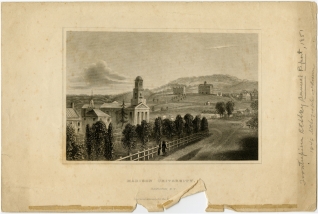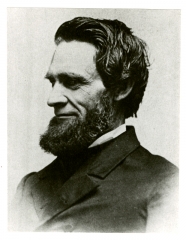largely on the many associations which had been attached to the old name since 1846. It was also suggested that potential donors would be less likely to contribute if the institution bore the Colgate name, believing that the family should assume its chief support. The Colgates, in fact, had not been consulted, nor did they favor the change but once the strength of opinion for it became clear they assented rather than embarrass its advocates.
The University and Education Society Trustees at their meetings in June, 1889, at which neither James B. Colgate nor his brother, Samuel, were present, adopted, without opposition, the motion to petition the State Supreme Court for the change. Dr. Dodge was foremost in urging this step. His leading opponent was Dr. Spear, the recently retired Treasurer, who seems to have been convinced he was called upon to defend the University, whatever the cost, as he had done so effectively in the Removal Controversy of 1847-50. He proceeded to obtain counsel, send communications to the press, circularize alumni, and collect the affidavits of those who agreed with him. To meet his tactics, Dr. Dodge, the faculty, and representative trustees also put their views before the public and the alumni and solicited affidavits. Rather than take immediate action on the petition the court appointed a referee to gather evidence and make a report. Meanwhile, Dr. Dodge died January 5th, 1890; Dr. Spear, who was, he thought, fatally ill, withdrew his opposition at the strong behest of Samuel Colgate who assured him that James B. Colgate would continue to support the University but only if the objectors were to lose their case. The referee preceeded with the hearings and in due time made his report recommending that the petition be granted. The court accepted the recommendation and, on April 21, 1890, authorized the change of name, effective May 26th.
Of the approximately 650 alumni over 400 had signed the affidavits for change while of the 75 who objected, all but 13 withdrew their opposition before the court acted. The undergraduates, who at first disapproved of the new name, by February, 1890, unanimously endorsed it, many of them out of respect to the late Dr. Dodge’s wishes.
Public celebration of the name change was set off by the news on March 14th, 1890, that the Regents of the University of the State of New York had approved it unanimously the day before. The momentous telegram reached Hamilton about noon and soon pandemonium






